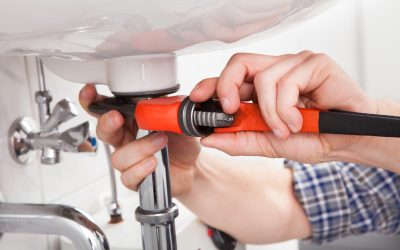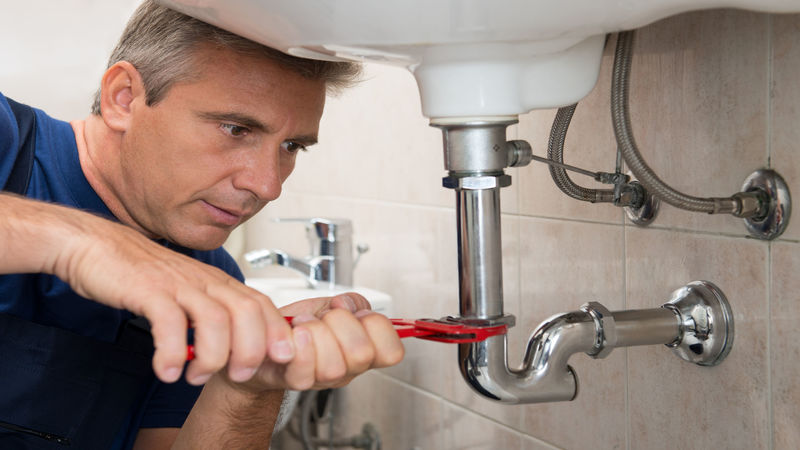Tree roots are one of the most common—and often overlooked—causes of sewer line problems for homeowners. While trees add beauty, shade, and value to a property, their roots can wreak havoc on underground plumbing. If left untreated, root intrusion can lead to severe blockages, leaks, and even the need for full residential sewer line repair or sewer line replacement.
Understanding how roots invade sewer lines, the warning signs of trouble, and the best prevention methods can save you from major plumbing headaches and costly repairs.
Why Tree Roots Target Sewer Lines
Roots naturally seek out moisture and nutrients to sustain tree growth. Sewer lines, especially older ones made of clay or concrete, can develop small cracks or loose joints over time. These imperfections release vapor and trace amounts of water into the surrounding soil—essentially sending an invitation to nearby tree roots.
Once roots detect the moisture, they grow toward the source and infiltrate the pipe through the smallest opening. Inside the sewer line, roots thrive on the constant supply of water and organic matter, allowing them to grow quickly and cause blockages.
How Root Intrusion Damages Sewer Lines
Root intrusion doesn’t just clog a pipe—it can also cause structural damage. Here’s how the process unfolds:
- Initial Infiltration – Roots enter through tiny cracks, gaps, or unsealed joints in the sewer line.
- Expansion Inside the Pipe – Roots grow larger, trapping waste, toilet paper, and other debris.
- Increased Pressure – As more debris builds up, pressure inside the pipe rises, causing further cracks or breaks.
- Pipe Collapse – In severe cases, the pipe may fully collapse, requiring complete sewer line replacement.
Signs You May Have Root Damage in Your Sewer Line
Catching root intrusion early can make the difference between a minor repair and a major excavation. Common warning signs include:
- Recurring Clogs – Multiple drains backing up repeatedly despite cleaning.
- Slow Drains – Water takes longer than normal to drain from sinks, tubs, or toilets.
- Gurgling Sounds – Air pockets caused by root blockages can produce bubbling noises.
- Sewage Odors – Foul smells coming from drains or your yard may indicate a break in the line.
- Unusual Lawn Growth – Extra-green patches or soggy spots in your yard can signal a leak where roots are feeding.
If you notice any of these symptoms, it’s time to call a professional for a camera inspection to confirm the cause.
Residential Sewer Line Repair vs. Sewer Line Replacement
The right solution depends on the severity of the damage.
Residential Sewer Line Repair
If the root intrusion is limited to a small section and the pipe is otherwise in good condition, targeted repairs can restore function. This may involve:
- Cutting and removing roots using mechanical augers or hydro-jetting.
- Sealing entry points with epoxy liners or other trenchless repair methods.
Sewer Line Replacement
When root damage is extensive—such as collapsed sections, widespread cracks, or outdated materials—a full sewer line replacement is often the most reliable long-term solution. Modern replacement options use durable materials like PVC, which are resistant to root intrusion.
A reliable plumbing partner like Cure All Plumbing can assess the damage and recommend whether repair or replacement is the most cost-effective choice.
Preventing Tree Roots from Invading Sewer Lines
Prevention is the most effective way to avoid root-related sewer line issues. Here are some proactive steps:
- Choose Landscaping Wisely – Plant trees with non-invasive root systems, and keep them far from sewer lines.
- Install Root Barriers – Physical barriers in the soil can redirect roots away from pipes.
- Schedule Routine Inspections – Regular camera inspections can detect small intrusions before they become major problems.
- Use Preventive Root Treatments – Certain foaming solutions can be applied to kill roots inside pipes without harming the tree.
Modern Solutions for Root Intrusion
Technology has made it easier to handle root problems without extensive digging. Trenchless methods, such as pipe lining and pipe bursting, allow plumbers to repair or replace sewer lines with minimal disruption to your yard.
- Pipe Lining – A resin-coated liner is inserted into the damaged pipe, creating a new, seamless interior that blocks root entry.
- Pipe Bursting – The old pipe is broken apart while a new pipe is pulled into place, providing a complete upgrade in durability.
These techniques are especially valuable for homeowners looking to avoid the mess and cost of traditional excavation.
The Cost of Delaying Repairs
Delaying residential sewer line repair or replacement after root intrusion can lead to:
- Major sewage backups inside the home
- Foundation and yard damage from leaking wastewater
- Increased repair costs as damage worsens
- Potential health hazards from bacteria exposure
Addressing the issue early not only saves money but also protects your home’s plumbing infrastructure.
Final Thoughts
Tree roots may be a natural part of your landscape, but they can become a serious threat to your plumbing if left unchecked. By understanding how root intrusion occurs, recognizing early warning signs, and taking preventive measures, you can reduce the risk of costly residential sewer line repair or sewer line replacement in the future.
When problems do arise, working with an experienced, reliable plumbing partner ensures you get the right solution—whether that’s targeted root removal or a complete system upgrade. Investing in prevention and timely repairs will keep your sewer line clear, functional, and root-free for years to come.


